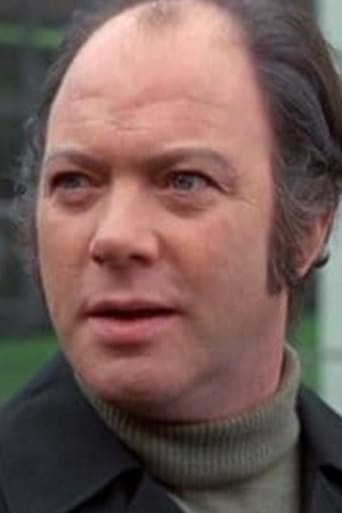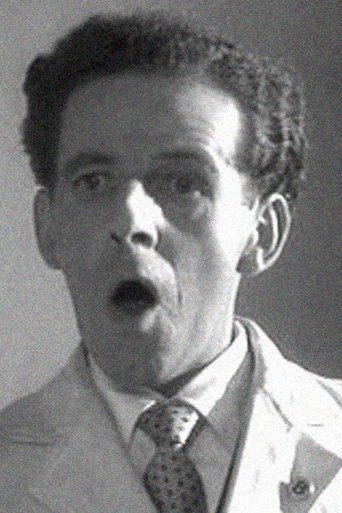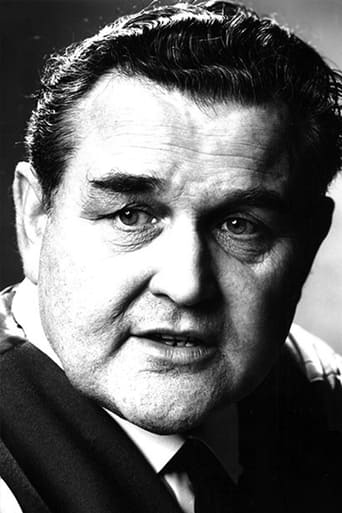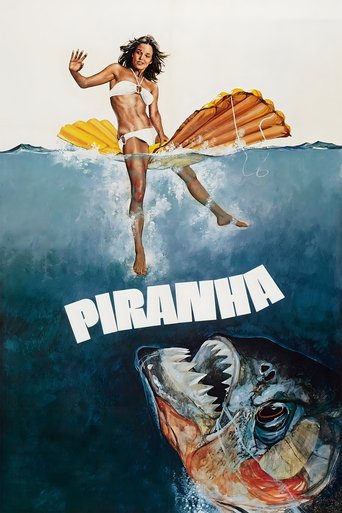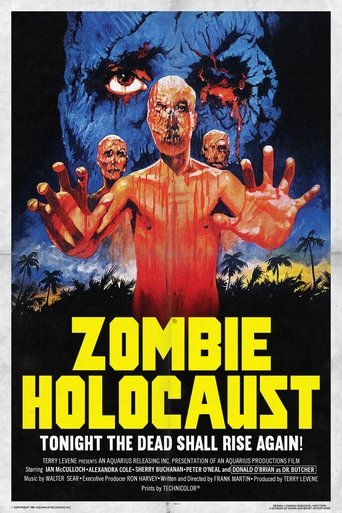
Frankenstein and the Monster from Hell (1974)
Dr Simon Helder, sentenced to an insane asylum for crimes against humanity, recognises its director as the brilliant Baron Frankenstein, the man whose work he had been trying to emulate before his imprisonment. Frankenstein utilises Helder's medical knowledge for a project he has been working on for some time. He is assembling a man from vital organs extracted from various inmates in the asylum. And the Baron will resort to murder to acquire the perfect specimens for his most ambitious project ever.
- Terence Fisher
- Anthony Hinds
- Mary Shelley
Rating: 6.182/10 by 96 users
Alternative Title:
Country:
United Kingdom
Language:
English
Runtime: 01 hour 35 minutes
Budget: $0
Revenue: $0
Plot Keyword: suicide, experiment, surgeon, insane asylum, mad scientist, mute, suicide by hanging, severed hand, brain transplant, frankenstein, hand transplant
Neolithic Lobotomy Gone Astray. Frankenstein and the Monster from Hell is directed by Terence Fisher and written by John Elder (AKA: Anthony Hinds). It stars Peter Cushing, David Prowse, Shane Briant, Madeline Smith and John Stratton. Music is by James Bernard and cinematography by Brian Probyn. Working under the name of Doctor Victor, Baron Victor Frankenstein (Cushing) is head physician at an asylum for the criminally insane. When Simon Helder (Briant), a gifted doctor himself and a follower of Frankenstein’s work, is committed to the asylum on sentence of sorcery, the pair quickly form a partnership that will unleash Frankenstein’s latest project… Actually made in 1972 but released two years later, Frankenstein and the Monster from Hell came out as Hammer Horror was limping along on its last legs. It was to be the last in the Frankenstein series and the last film directed by the brilliant Fisher. The reputation of the film is a very mixed one, certainly the box office returns and critical notices at the time point it out as a misfire. But what I have come to find is that staunch Hammer Horror fans have a kind regard towards the film, and I think that is fair given that it pretty much goes back to past glories, if not in scope, but in narrative and atmospheric toning. Yes it is viable to say that it’s pretty much a rejig of the earlier Revenge of Frankenstein, so in that it’s a bit lazy, but I like to think that the return of Cushing, Fisher and Hinds suggests they were making one for the fans here, and it’s not without merits in spite of familiarity and budgetary restrictions. It’s great to have Cushing back as Victor, his personal life woes giving him a gaunt look that suits Frankenstein’s character arc no end, this in spite of the daft wig he dons and a moment of Superman type heroics that doesn’t quite sit right. Briant is ebullient and good foil in the mixed up surgeon stakes, and Smith adds the Hammer Glamour without having to strip naked. Why? Why? Why? But it’s with the setting, the asylum and its characters, and the monster itself where it hits heights not acknowledged by the critics. Prowse’s monster is a return to tragicreature territory, with the brain of a genius who wanted out of life, the hands of a skilled craftsman and a Neolithic monstrosity of a body, once the creature knows what he has become his sadness pours out in droves. Prowse doing a great job of conveying such tragedy with visual reactions and bodily movements. The mask unfortunately means when it speaks the lips don’t move, but it’s a fine Hammer creation regardless. The asylum inmates are in terms quirky and troubling, and with most of the shoot restricted to a couple of interior sets, the sense of being incarcerated is evident. Props are minimal, with a few of the good doctors odd looking tools and machines dotted around the place. The gore is used sparingly, but the impact is in the grand traditions of Hammer, while the back stories to Smith’s mute and Asylum Director Adolf Klauss (Stratton) are edgy strands waiting to be pulled at in the name of Guignol entertainment. It’s not a great send off for Doc Frank in Hammer world, not least because the finale lacks punch, but for loyal fans of the studio’s creature features there is love and honest respect shown by the makers. 6.5/10
_**Formidable monster and nice Gothic ambiance, but too simple and drab**_ Hammer Studios did 7 Frankenstein films in 17 years from the late 50s to early 70s as follows: 1. The Curse of Frankenstein (1957); 2. The Revenge of Frankenstein (1958); 3. The Evil of Frankenstein (1964); 4. Frankenstein Created Woman (1967); 5. Frankenstein Must Be Destroyed (1969); 6. The Horror of Frankenstein (1970); and 7. Frankenstein and the Monster from Hell (1974). Peter Cushing played Baron Frankenstein in every one of these except "The Horror of Frankenstein." The reason being "Horror" was a remake of the original story and they needed a much younger actor to play the role; they chose Ralph Bates (who superbly plays the love-to-hate satanist in "Taste the Blood of Dracula," released the same year). "Frankenstein and the Monster from Hell" was the last hurrah for the series. The story involves a young doctor, Simon Helder (Shane Briant), who is fascinated by Frankenstein's works and gets sentenced to an asylum for practicing sorcery. There he meets the thought-to-be-dead Baron Frankenstein, now going by the name Dr. Victor (Cushing), and they team-up to carry on his gruesome work, which results in the titular monster. This is an unmistakable Hammer film and solid Gothic horror, but it's held back by a simplistic plot and dreary ambiance. The story lacks the fascinating and innovative approach of the two previous films, "Frankenstein Created Woman" and, especially, "Frankenstein Must Be Destroyed," which represent the best of the series IMHO. Furthermore, the setting of the story is too one-dimensional, basically being limited to the asylum, which adds to the dreariness. Speaking of which, the film lacks the bright colors usually associated with Hammer horror. The drab palate does up the ante of the Gothic ambiance, but it'll likely disappoint those expecting the lushness of typical Hammer horror. On the plus side, the Neolithic creature looks seriously bestial and is formidable, played by David Prowse, aka Darth Vader of the first three Star Wars flicks. From a distance he looks impressive, but close-ups reveal curious blow-up biceps, which hampers the illusion, although it didn’t really bother me. Regardless, the monster evokes a good amount of pathos. Another plus is the beautiful Madeline Smith of "Live and Let Die" fame, who plays the Baron's mute assistant, Sarah. The story is basically a drama with horror trappings and, more specifically, a tragedy; so those expecting the overt horror antics of most slasher flicks will be let down. It focuses on how Baron Frankenstein’s obsession with his brilliant-yet-dubious experiments have led to the only place left for him, the asylum, where he’s a big fish in a small pond. He maintains his optimistic determination because he’s sacrificed everything and there’s nothing else left for him in life. Speaking of which, while what happens to one or two characters is tragic, as usual, the climax is surprising (even a couple of the characters look surprised). It’s a nice change for the series, not to mention a good way to close it. At the end of the day "Frankenstein and the Monster from Hell" is a solid Hammer horror film and a fine way to end their series, but it lacks the color and pizzazz of the previous two Cushing installments. As such, it's overall mediocre. The movie runs 1 hour, 33 minutes, and was shot at EMI Elstree Studios, Borehamwood, Hertfordshire, England, just northwest of London. GRADE: C
Certainly the most colourfully gory of the Hammer "Frankenstein" films and I think therein lies the problem. This is simply a rehash of so many earlier iterations; but there is nothing at all left to your imagination. The ruthless Peter Cushing ("Baron Frankenstein") has some more scientifically accurate dialogue but Shane Brent as his able, deviously ambitious, assistant seems to offer little more than eye-candy, as does Madeleine Smith as "Sarah". Notable for me is that the anthropoid monster is played by David Prowse long before he found his fame in a black cape. Having been given the brain of a professor, the monster looks in the mirror and sees his reflection and not surprisingly, gets a tiny bit cross. It's well made, this - the last feature from Terence Fisher - but offers little more than a rainy day time-killer nowadays.





